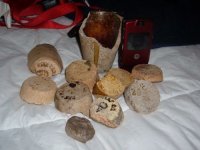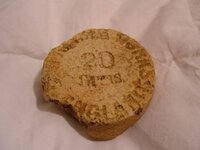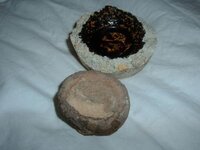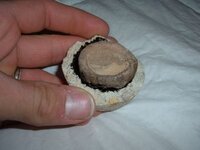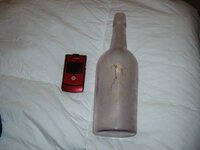chong2
Bronze Member
yesterday, the only day of my moving vacation i went to a place i have been wanting to go to for a long time for bottles. a small old mining town that did it all, gold, silver ,copper, turquoise. when i finally got to the place i was going i probed for about 5 min and hit a nice unembossed amethyst whiskey. after i dug it i looked over and saw few bases of what appears to be ceramic cups. i picked them up and dug a wee bit and found lots of these things. and a whole half of one of the cups. also i found some matter that is pretty heavy and sits perfectly into these cup things. i broke out my MD and swooped it but no metal content. i had to leave cause there was a freak winter rain and i had only a tee shirt on.when i got home they read BATTERSEA WORKS ENGLAND 20GRMS. my theory is they were used to essay or something and they had to break the cups to remove the matter inside. so what the heck are they ? i likem whatever they are and am going back in a few days to get alot more. should i take my MD and check this site out
? i likem whatever they are and am going back in a few days to get alot more. should i take my MD and check this site out dumb question, i should always take and detect
dumb question, i should always take and detect i have been without the net and am at my sisters house, no time to research these, any help will be awesome everyone!!! thanks
i have been without the net and am at my sisters house, no time to research these, any help will be awesome everyone!!! thanks
 ? i likem whatever they are and am going back in a few days to get alot more. should i take my MD and check this site out
? i likem whatever they are and am going back in a few days to get alot more. should i take my MD and check this site out dumb question, i should always take and detect
dumb question, i should always take and detect i have been without the net and am at my sisters house, no time to research these, any help will be awesome everyone!!! thanks
i have been without the net and am at my sisters house, no time to research these, any help will be awesome everyone!!! thanks

